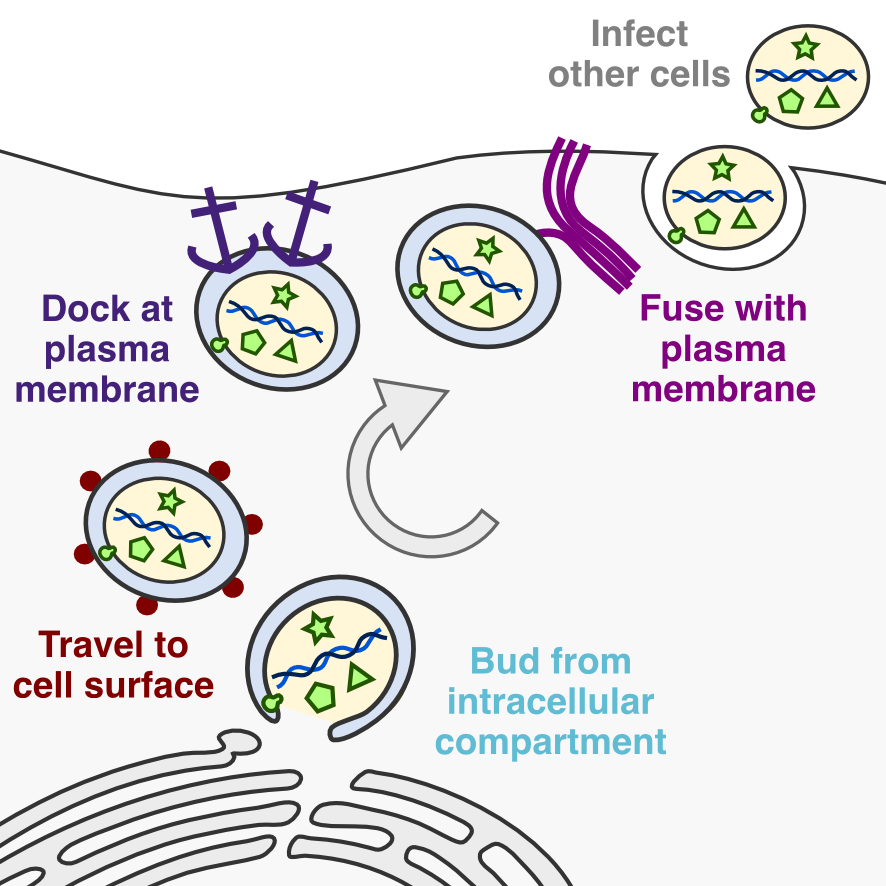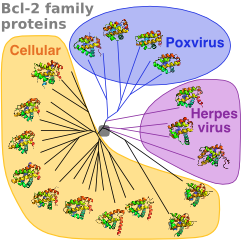We're Hiring!
We're looking for a structural enzymologist to help decipher how viruses evolve resistance to antiviral drugs. More details here and apply here.
Prospective students:
We are happy to accept students from the BBSRC DTP programme for PhD projects. We're also happy to hear from potential applicants for Gates Cambridge MPhil or PhD studentships, Cambridge Trust Studentships or Commonwealth Scholarships. You can find details on additional sources of studentship funding on the Department of Pathology prospective students page.
Prospective postdocs:
We are always interested to hear from motivated postdocs who want to apply for fellowships (e.g. from EMBO, HFSP, the Royal Commission for the Exhibition of 1851 [Stephen had one of these!], the Royal Society or the Wellcome Trust) to join the lab.
 Molecular mechanisms of enveloped virus egress
Molecular mechanisms of enveloped virus egress
After replication viruses face a logistical challenge: How do they ensure progeny virions are efficiently released from host cells? While human pathogens such as herpes simplex virus and vaccinia virus (the smallpox vaccine) are known to subvert host-cell intracellular membrane trafficking pathways in order to leave infected cells, little is known about the molecular mechanisms used to achieve this. We are using a combination of cell biology, biochemistry, biophysics and structural biology to define the interactions between host cell and virus proteins that enable enveloped viruses to exit infected cells and thereby spread the infection to new hosts.
Viral subversion of cellular immunity
In order to establish a fruitful infection viruses must evade the immune surveillance systems of the host. I am interested in how viruses directly interfere with innate and intrinstic immune responses during infection, how they modify the surface of infected cells to minimise the adaptive immune response, and how some viruses have even managed to hijack mammalian innate immune proteins and ‘re-program’ these to suit the needs of the virus.

